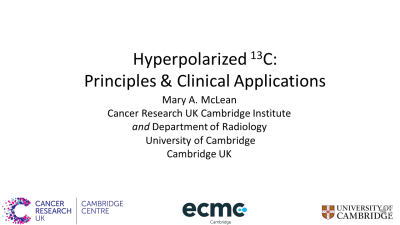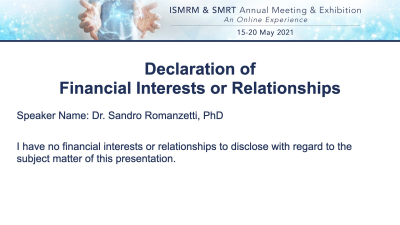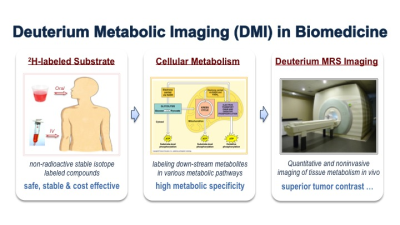Sunrise Session
Multinuclear Imaging & Spectroscopy
ISMRM & SMRT Annual Meeting • 15-20 May 2021

| Concurrent 2 | 13:00 - 13:45 | Moderators: Ilwoo Park & Rita Schmidt |
 |
Hyperpolarized 13C: Principles & Clinical Applications
Mary McLean
Hyperpolarization of 13C can transiently increase its signal around 100,000 fold. This enables tracer studies in vivo of 13C-labelled metabolites with high time resolution. The polarization decays with a T1 of around 30 s, necessitating innovations in hardware, sequences, and study design to capture the signal within its short longevity. The first tracer molecule taken into humans has been [1-13C]pyruvate. Metabolism to lactate, alanine, and bicarbonate has been shown in human brain, heart, muscle, and abdominal organs. Much interest has focused on studies in cancer, where elevations in lactate labelling related to the Warburg effect can be observed.
|
|
 |
Basic Understanding & Clinical Applications of 23Na-MRI
Sandro Romanzetti
Sodium is the second most abundant MR active nucleus in the human body and it has a fundamental role in the physiology of human cells. Nevertheless, its low concentration and quick relaxation have limited its application in medicine for a very long time. Research from the last two decades has shown that sodium MRI is no longer a novel MR method. Most of the challenges associated with its application have been addressed. Furthermore, the increasing availability of ultra-high field MR systems (UHF-MRI) in clinical settings has opened new horizons for many medical applications of Sodium MRI.
|
|
 |
Deuterium Metabolic Imaging (DMI)
Xiao-Hong Zhu
Metabolic imaging provides valuable tools for evaluating cellular metabolism under physiopathological conditions. Deuterium metabolic imaging (DMI) is a newly developed deuterium (2H) MRS imaging technology that can measure the steady-state signal and/or dynamic changes of deuterated metabolites in living organs or tissues after administration of deuterium-labeled substrate. DMI has been used to study various metabolic processes, especially the cerebral glucose metabolism in healthy brain and in brain tumor patients, and has shown its advantages over certain existing methods. This presentation will briefly introduce DMI technology - its past development, current capabilities and future prospects.
|
The International Society for Magnetic Resonance in Medicine is accredited by the Accreditation Council for Continuing Medical Education to provide continuing medical education for physicians.